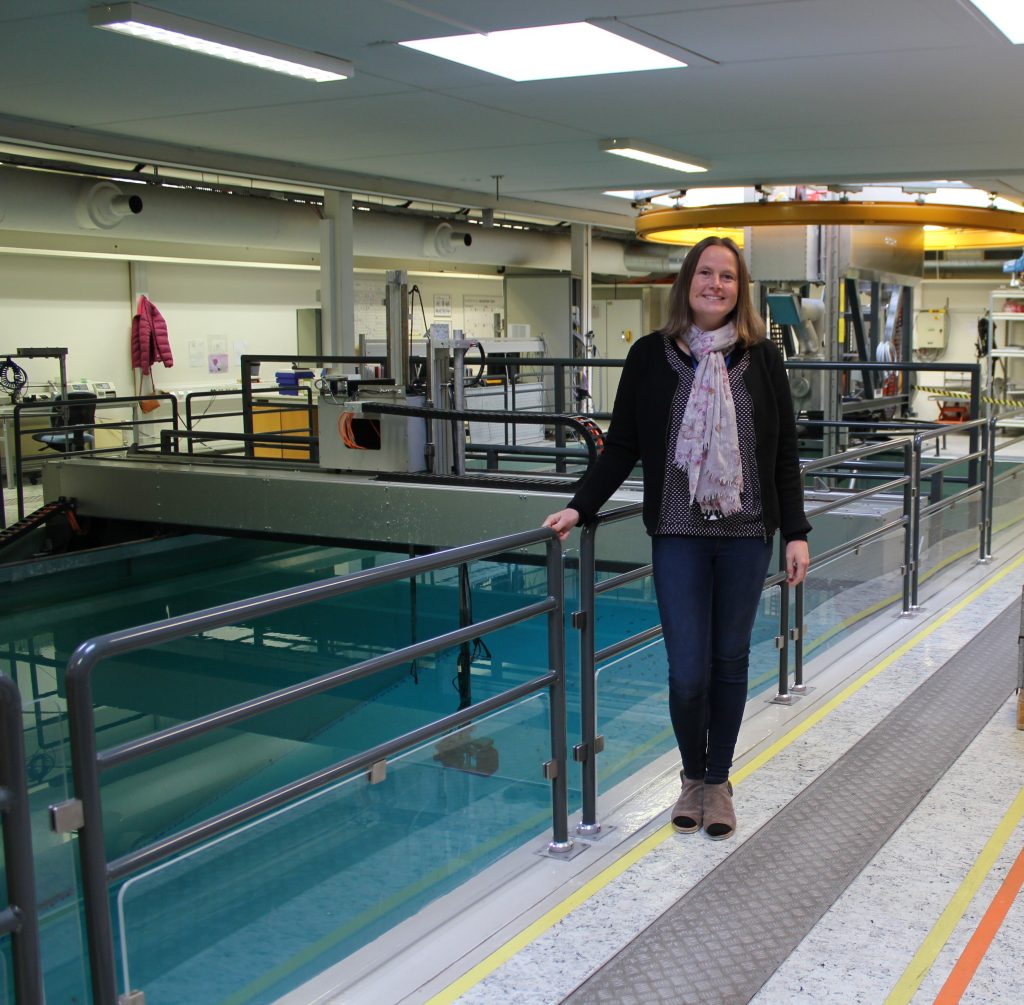Ultrasound technology can be used to so much more than just medical images. At the Center for Innovation in Ultrasound (CIUS), we’re working together to find out how ultrasound can solve problems.
One of our researchers is Ellen Katrine Sagaas Røed, PhD candidate at the University of South Eastern Norway (USN). She has been working as an acoustical transducer designer for Kongsberg Maritime Subsea since 2002.
— We design and manufacture transducers for underwater applications, such as fishery, sea bed mapping, positioning and communication, says Røed. Her job is to design the sound generating part of the transducer, using piezoelectric material that expands and contracts when subjected to an electric field.
Transducer performance
— Transducer performance is essential to image quality. The transducer frequency and sensitivity decide what kind of fish that can be detected or what kind of sea bed that can be mapped, and at what range. The frequency bandwidth is important for spatial resolution and communication. The size of the transducer is also an important factor, as the transducers are more and more often mounted on small vehicles like gliders and autonomous underwater vehicles (AUVs).
Alternative to single crystals
— Today we mostly use the piezoelectric ceramic PZT as the active material. PZT is a polycrystalline material, Røed explains. Lately, single crystal materials have become popular in high end medical transducers. Single crystals have a very large electromechanical coupling coefficient compared to PZT and may thus significantly increase bandwidth. Use of single crystals may also reduce transducer size. — However, the material has a very high-volume cost, she points out. — Underwater transducers typically operate in the kHz range. Thickness and diameter of the active part of a transducer scale with resonance frequency, so the active part of a 100 kHz underwater transducer will have approximately 1000 times the volume of a 1 MHz medical transducer. A new type of material called textured ceramics is now being developed. This material is expected to possess some of the benefits of single crystals, but at a lower volume cost.
Academic collaborations
One of the large research centers in this field is the Applied Research Laboratory at Pennsylvania State University. Their head of textured ceramics research, professor Richard Meyer, is co-supervisor on her project, and her main supervisor is Lars Hoff, professor at USN and leader of WP1 in CIUS. — We at Kongsberg Maritime Subsea find it very exciting to be able to explore high coupling piezoelectric materials in cooperation with these very competent academic groups with lots of transducer experience. CIUS has really been a catalyst for increased cooperation between Kongsberg and USN, and it was also the establishment of CIUS that made me think of the possibility for in depth studies of my design tasks through a PhD project.
Multidisciplinary field
Transducer design is a multidisciplinary field and the in-house manufacturing at Kongsberg Maritime Subsea makes Røed´s job even more diverse. — I really enjoy working with experts on different fields, from soldering and dicing to mechanical engineering, signal processing and testing. It makes me want to provide the best answers to their acoustic design related questions, and there are never lack of exciting and challenging design tasks. In this regard, the national ultrasound expertise available in CIUS is very valuable.
Informed exploitation of the ocean
— I hope that my PhD project will contribute to underwater transducers being used in even more applications and providing even better information, Røed says and adds: — Informed exploitation of the oceans is increasingly important and high coupling materials in transducers may contribute to more efficient monitoring.


